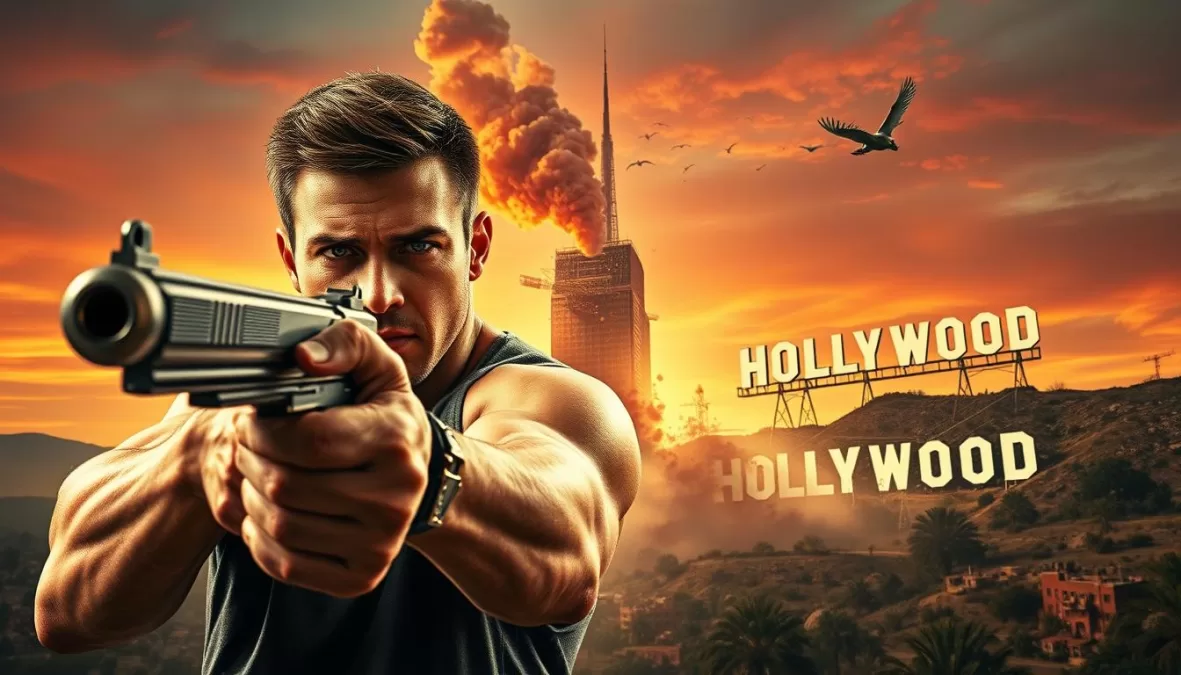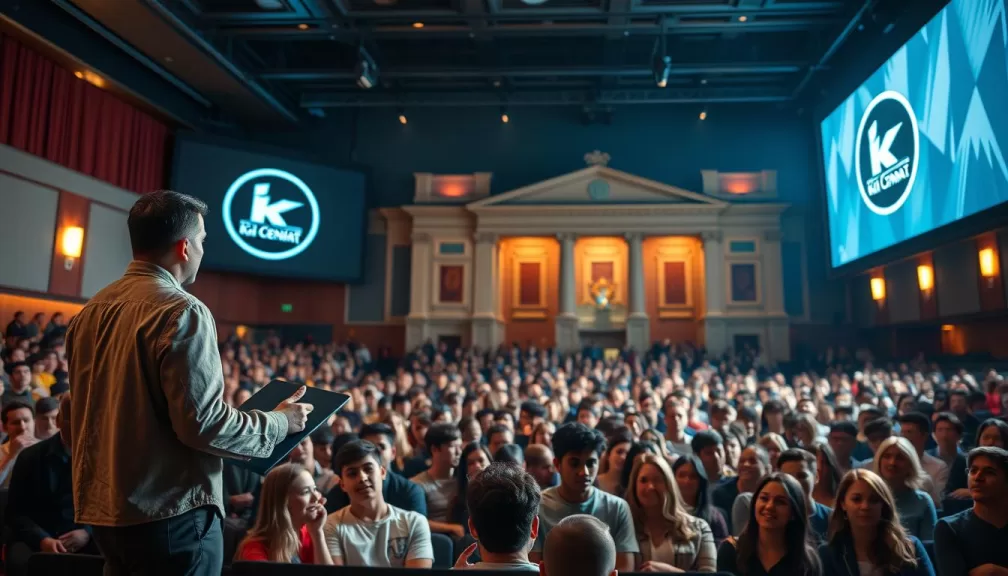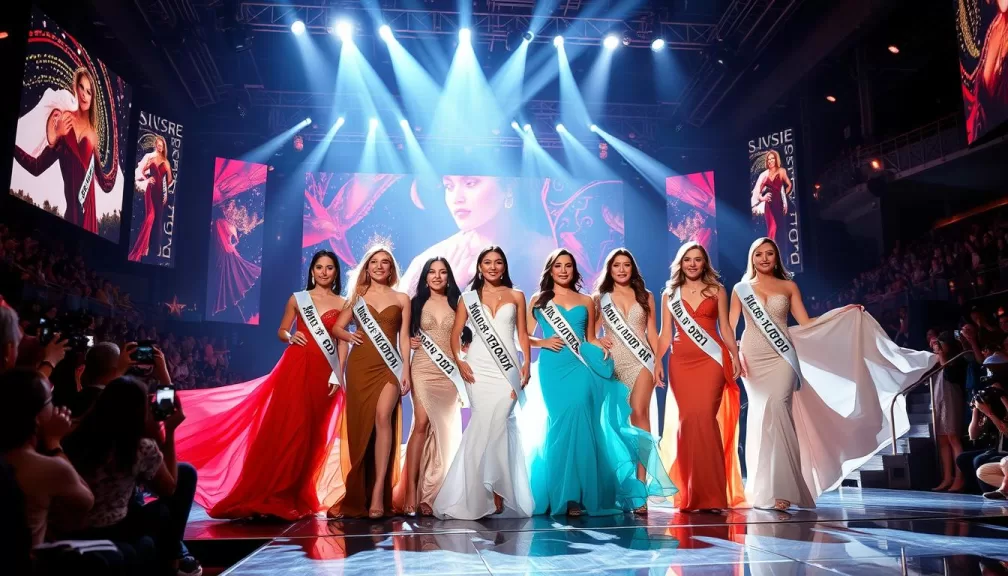Welcome to our definitive guide to the greatest Hollywood action films ever made, where we’ll explore the movies that defined the genre and continue to thrill audiences decades later.
These iconic films have stood the test of time, thanks to groundbreaking stunts, special effects, and innovative direction. From early silent film stunts to modern CGI spectacles, action cinema has evolved while maintaining its core appeal.
Whether you’re a longtime fan of explosive blockbusters or new to the genre, this guide will help you appreciate the artistry and excitement behind Hollywood’s most adrenaline-pumping movies.
Key Takeaways
- Explore the greatest Hollywood action movies that have stood the test of time.
- Discover what makes these films so enduring, from stunts to special effects.
- Learn about the evolution of action cinema and its core appeal.
- Appreciate the artistry behind Hollywood’s most thrilling films.
- Find out why certain movies have earned their place in the action movie hall of fame.
The Evolution of Action Cinema: From Silent Films to Modern Blockbusters
Since the dawn of cinema, action films have captivated audiences with their thrilling sequences and daring stunts. The action film genre has a rich and varied history, evolving significantly over the decades to reflect changing audience tastes, technological advancements, and cultural contexts.
The Birth of Action: Early Stunts and Silent Era Heroes
The roots of action cinema trace back to the early days of film, with pioneers like Thomas Edison creating short films that showcased simple stunts, such as “Boxing Cats.” Another early example is Edwin S. Porter’s “The Great Train Robbery,” where an outlaw fires his pistol directly into the camera, creating a shocking moment that became a hallmark of early action films. Physical comedians like Harold Lloyd and Buster Keaton further pushed the boundaries of action by performing their own dangerous stunts without safety equipment, laying the groundwork for future action heroes.
The Golden Age: Action Movies from the 1970s and 1980s
The 1970s marked a significant turning point for action cinema, with films becoming grittier and more realistic, reflecting the social tensions of the era. Movies like “The Wild Bunch” and “Bullitt” featured complex protagonists and visceral violence, setting a new standard for action films. The 1980s saw an explosion of action cinema, with stars like Arnold Schwarzenegger and Sylvester Stallone creating the template for the muscle-bound action hero. Films from this era emphasized spectacle and memorable one-liners, defining the action hero archetype for years to come.
| Era | Notable Films | Characteristics |
|---|---|---|
| Silent Era | The Great Train Robbery, Boxing Cats | Simple stunts, physical comedy |
| 1970s | The Wild Bunch, Bullitt | Gritty realism, complex protagonists |
| 1980s | Terminator, Rambo | Muscle-bound heroes, spectacle, one-liners |
The Digital Revolution: How CGI Changed Action Forever
The advent of Computer-Generated Imagery (CGI) in the 1990s revolutionized action cinema, allowing filmmakers to create elaborate action sequences that were previously impossible. Films like “Terminator 2: Judgment Day” and “The Matrix” showcased the potential of CGI, transforming the genre and raising the bar for action scenes. Today, CGI continues to play a crucial role in shaping action cinema, enabling the creation of complex, visually stunning sequences that captivate global audiences.
The evolution of action cinema is a testament to the genre’s ability to adapt and innovate, reflecting broader changes in society, technology, and culture. From its humble beginnings in silent films to the modern blockbusters of today, action cinema continues to thrill and entertain audiences worldwide.
What Makes a Great Action Movie? Key Elements of the Genre
Crafting an action movie that resonates with viewers involves a delicate balance of action, character development, and storytelling. At its core, a great action film is one that combines thrilling sequences with memorable characters and a gripping narrative, making it more than just a spectacle.
Memorable Heroes and Villains: The Importance of Character
The creation of compelling heroes and villains is fundamental to a successful action movie. Characters like John McClane from “Die Hard” or Furiosa from “Mad Max: Fury Road” are not just protagonists; they are relatable figures with whom audiences can empathize. A great action hero balances vulnerability with exceptional abilities, making their journey through the film both believable and captivating.
The villains, too, play a crucial role in elevating the story. A well-crafted antagonist can add depth to the narrative, providing a counterpoint to the hero’s motivations and actions. The conflict between heroes and villains drives the story forward, creating tension and engaging the audience.
Innovative Action Sequences and Stunts
Action sequences are the hallmark of the action genre, providing the thrilling moments that keep viewers on the edge of their seats. However, these sequences must be more than just chaotic; they should be well-choreographed and serve the story. Set pieces that are innovative and intricately designed can become iconic moments in cinema, remembered long after the credits roll.
Films like “John Wick” and “Mad Max: Fury Road” are exemplary in their use of action sequences. They not only provide adrenaline-fueled entertainment but also contribute to the narrative, revealing character traits and advancing the plot.
Pacing, Tension, and Narrative Drive
The pacing of an action movie is crucial to maintaining audience engagement. A well-balanced film knows when to accelerate the action and when to slow down, allowing for moments of character development and narrative breathing space. Tension is built through a combination of music, cinematography, and the unfolding story, keeping viewers invested in the characters’ fates.
| Element | Description | Impact on Film |
|---|---|---|
| Characters | Relatable heroes and compelling villains | Drives the narrative and engages the audience |
| Action Sequences | Innovative and well-choreographed sequences | Provides thrilling moments and advances the plot |
| Pacing and Tension | Balanced pacing and built tension | Maintains audience engagement and enhances the viewing experience |
In conclusion, a great action film is the result of a harmonious blend of memorable characters, innovative action sequences, and a well-paced narrative. By focusing on these key elements, filmmakers can create action movies that are not only thrilling but also leave a lasting impression on audiences.
The Influence of Hong Kong Cinema on Hollywood Action Films
From Bruce Lee to Jackie Chan, Hong Kong cinema has left an indelible mark on Hollywood’s action films. The crossover between Hong Kong and Hollywood has resulted in some of the most iconic action films of all time, revolutionizing the genre with new techniques, styles, and philosophies.
Martial Arts Mastery: Bruce Lee’s Legacy
Bruce Lee’s impact on action cinema cannot be overstated. His film Enter the Dragon is often cited as the catalyst for the kung-fu craze in the West during the 1970s. Lee’s philosophy on martial arts, combined with his charismatic on-screen presence, brought a new level of authenticity and excitement to action films. His influence extended beyond his films, paving the way for other Asian performers in Hollywood.
Key aspects of Bruce Lee’s legacy include:
- Introducing martial arts to a broader Western audience
- Influencing action choreography with his unique fighting style
- Paving the way for Asian actors in leading roles in Hollywood
John Woo and the Art of Ballistic Ballet
John Woo’s contribution to action cinema, particularly his “gun fu” style, has been highly influential. Films like Hard Boiled showcased his signature balletic approach to gunfights, which has inspired countless directors and choreographers in Hollywood. Woo’s style has been referenced and homaged in films such as The Matrix and John Wick, demonstrating the lasting impact of his work.
| Director | Influential Film | Notable Aspect |
|---|---|---|
| John Woo | Hard Boiled | Gun fu style |
| The Wachowskis | The Matrix | Innovative action choreography |
| Chad Stahelski | John Wick | Stylized gunplay and martial arts |
From Jackie Chan to Modern Choreography
Jackie Chan’s unique blend of martial arts and physical comedy has also had a lasting impact on Hollywood’s action films. His emphasis on practical stunts and creative fight choreography has inspired a generation of action stars and choreographers. Modern films continue to draw from the traditions established by Chan and other Hong Kong action cinema legends, blending Eastern action aesthetics with Western storytelling.
The influence of Hong Kong cinema on Hollywood action films is a testament to the power of cross-cultural exchange in cinema. As the action genre continues to evolve, the legacy of pioneers like Bruce Lee, John Woo, and Jackie Chan remains a vital part of its DNA.
Top 10 Action Movies Hollywood Has Ever Produced
The landscape of action cinema is dotted with landmark films that have shaped the genre into what it is today. From groundbreaking stunts to innovative storytelling, these movies have captivated audiences worldwide.
Die Hard (1988): The Ultimate Action Blueprint
Die Hard is often cited as one of the best action movies of all time, and for good reason. It set the standard for the “ordinary man in extraordinary circumstances” template that many films have since followed.
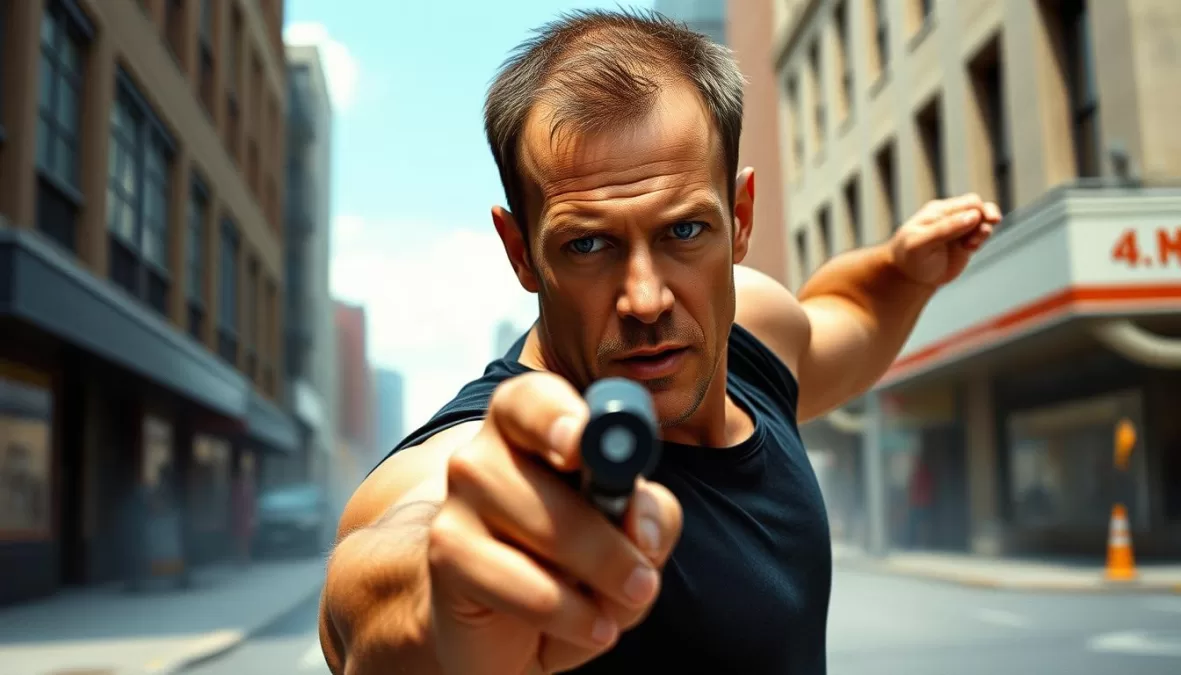
The Matrix (1999): Revolutionary Action Sci-Fi
The Matrix was a game-changer in the sci-fi action genre, blending philosophical concepts with groundbreaking visual effects and martial arts choreography.
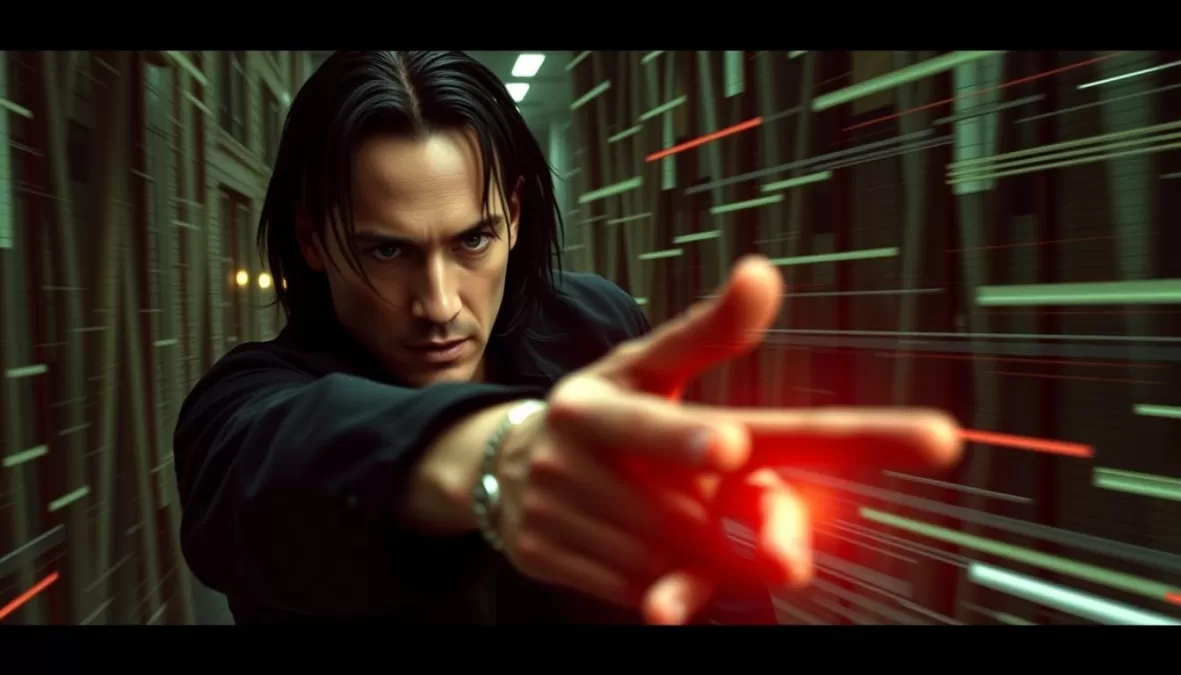
Mad Max: Fury Road (2015): Post-Apocalyptic Adrenaline
Mad Max: Fury Road is a masterclass in visual storytelling and practical effects, with George Miller creating a non-stop action spectacle that maintains emotional resonance and thematic depth.
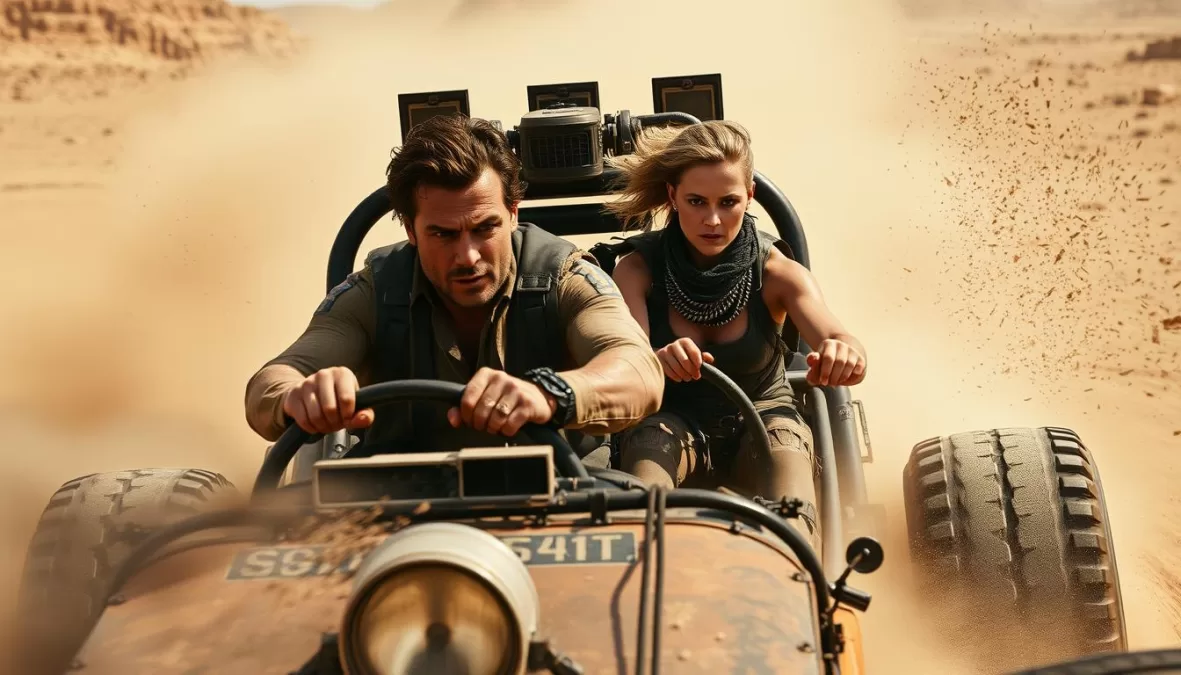
Terminator 2: Judgment Day (1991): Groundbreaking Effects and Heart
Terminator 2: Judgment Day was a landmark film in terms of special effects, with the liquid-metal T-1000 Terminator being a particularly memorable villain.
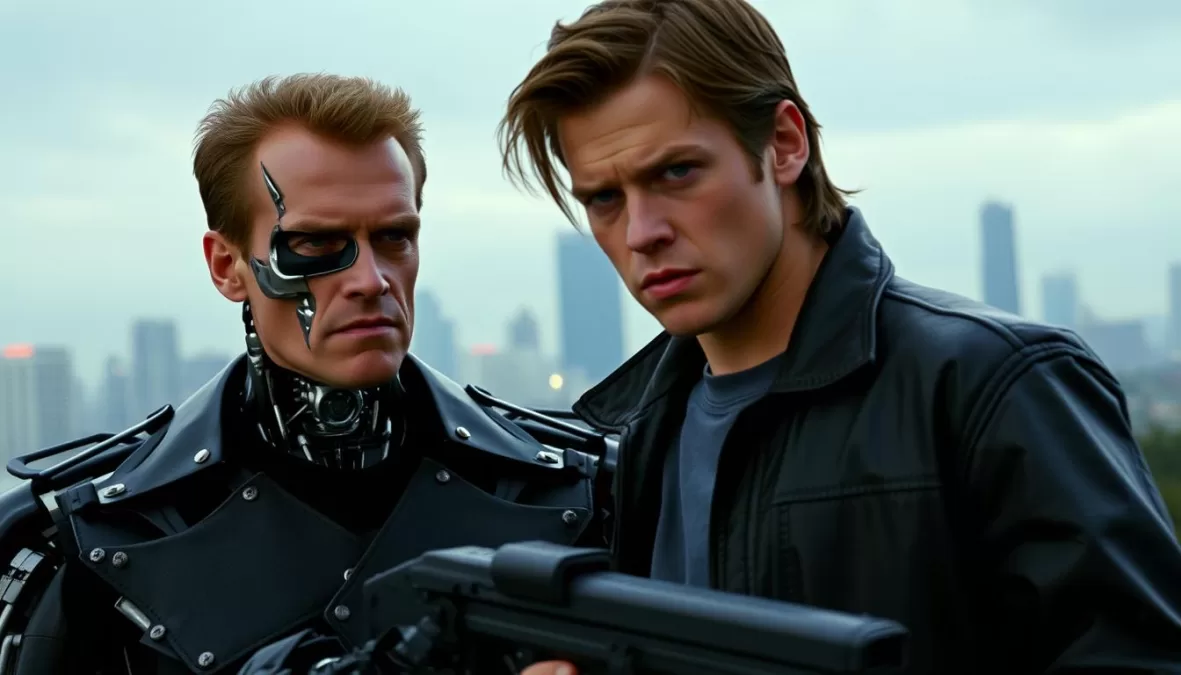
Raiders of the Lost Ark (1981): Adventure Perfection
Raiders of the Lost Ark is an iconic adventure film that set the standard for action sequences and memorable heroes, with Harrison Ford’s portrayal of Indiana Jones being particularly iconic.
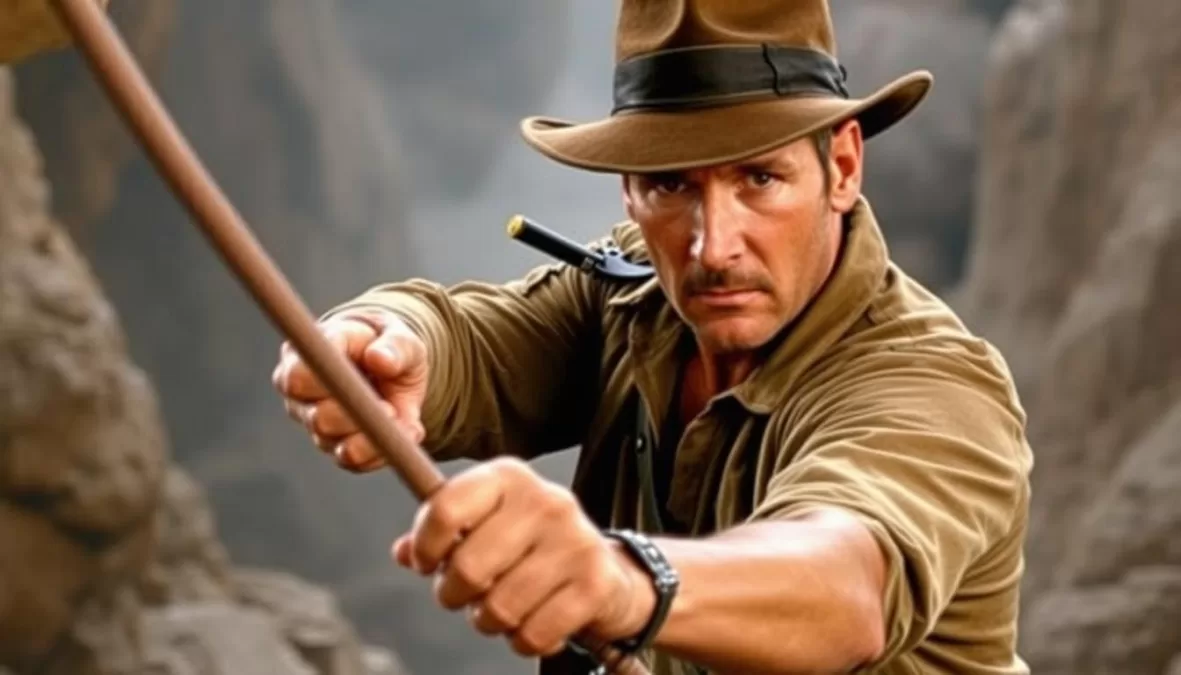
John Wick (2014): Reinventing the Action Genre
John Wick redefined the action genre with its innovative fight choreography and stylish visuals, making Keanu Reeves a modern action hero.

Mission: Impossible – Fallout (2018): Practical Stunts Masterclass
Mission: Impossible – Fallout is a showcase for Tom Cruise’s commitment to practical stunts, with the HALO jump scene being a particularly impressive example.
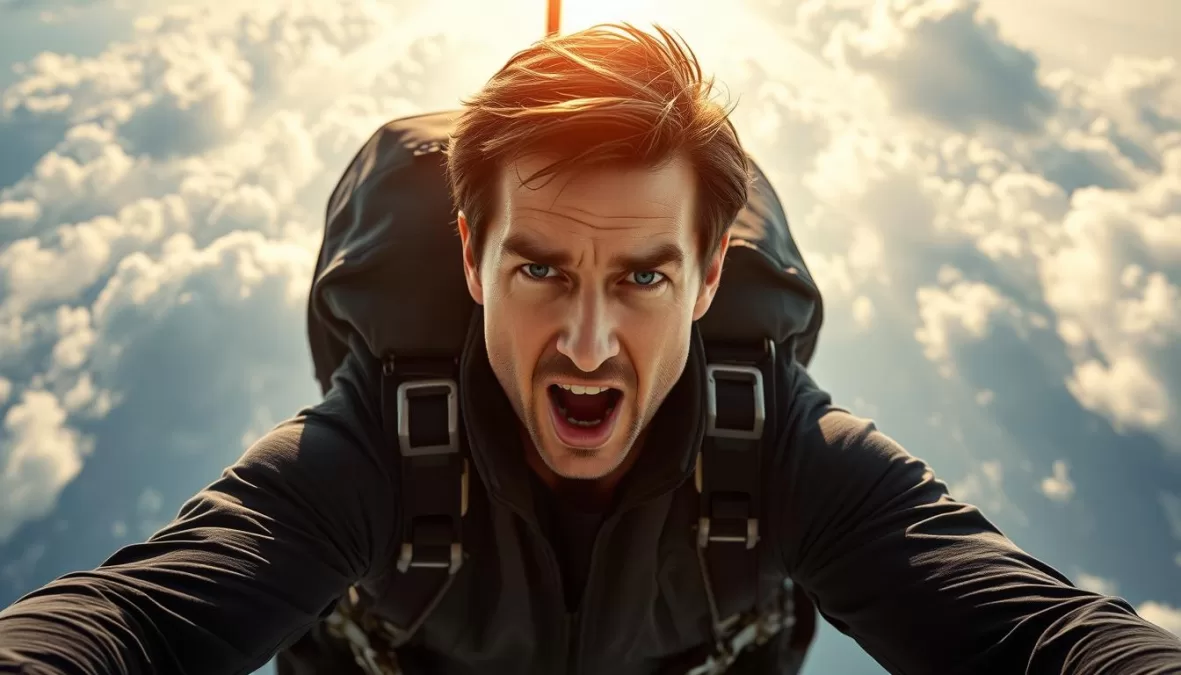
The Dark Knight (2008): Superhero Action Excellence
The Dark Knight is widely regarded as one of the best superhero films of all time, with Heath Ledger’s posthumous Oscar for his portrayal of the Joker being a testament to his chilling performance.
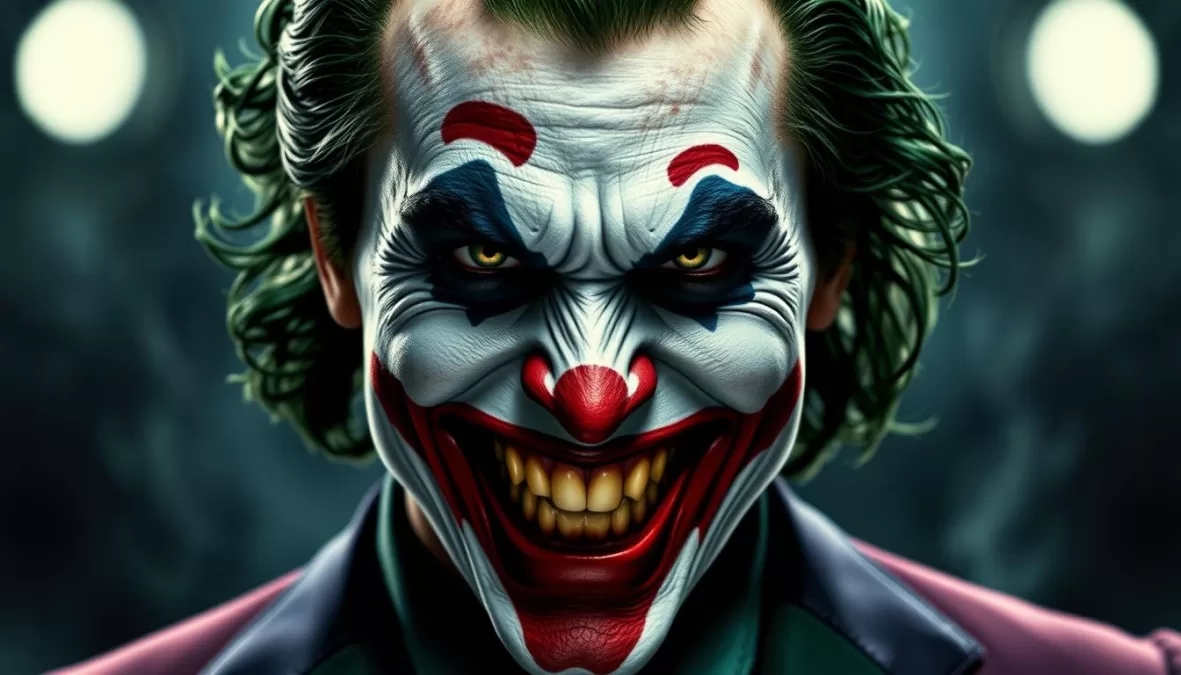
Kill Bill: Vol. 1 (2003): Tarantino’s Martial Arts Epic
Kill Bill: Vol. 1 is a homage to martial arts cinema, with Uma Thurman’s character, The Bride, seeking revenge against her former allies.
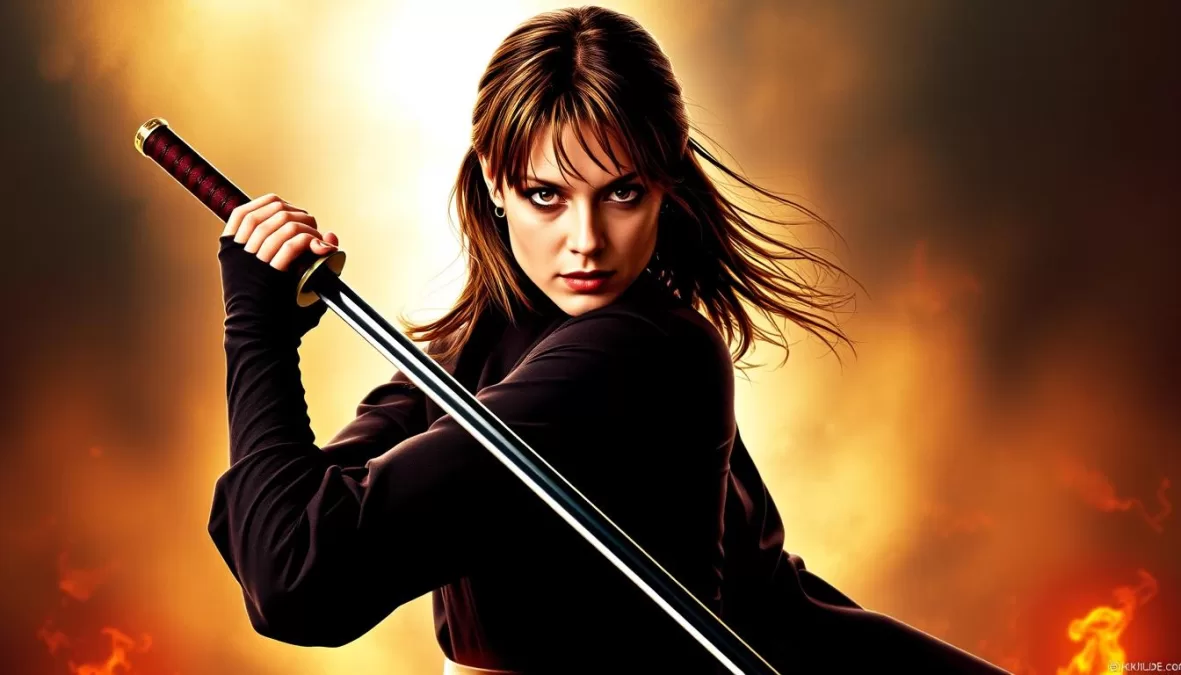
Aliens (1986): Action-Horror Perfection
Aliens is a masterclass in action-horror, with Sigourney Weaver reprising her role as Ellen Ripley against a backdrop of xenomorphs and corporate greed.
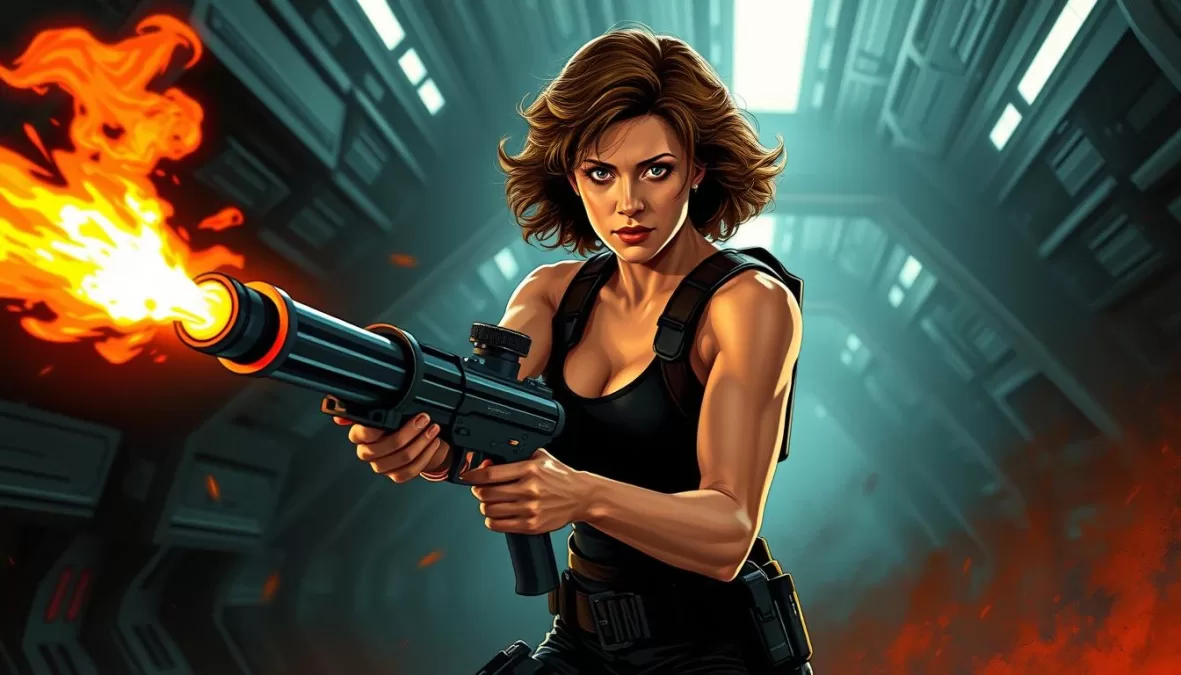
Iconic Directors Who Revolutionized Action Cinema
The landscape of action cinema has been forever changed by a handful of visionary directors. These filmmakers have not only pushed the boundaries of what is possible on screen but have also influenced generations of filmmakers to come. In this section, we’ll explore the contributions of four such directors: James Cameron, Christopher Nolan, George Miller, and Kathryn Bigelow.
James Cameron: Pushing Technical Boundaries
James Cameron is renowned for his relentless pursuit of innovation in filmmaking. From the groundbreaking effects in Terminator 2: Judgment Day to the immersive world-building in Avatar, Cameron has consistently raised the bar for action films. His commitment to using technology to tell compelling stories has inspired a generation of filmmakers. As Cameron himself once said,
“The moment you decide to make a movie, you’ve already made a compromise.”
This drive for perfection has led to some of the most memorable action sequences in cinema history.
Christopher Nolan: Intellectual Action Filmmaking
Christopher Nolan is celebrated for his intellectual approach to action filmmaking. Films like Inception and The Dark Knight trilogy showcase his ability to balance complex narratives with spectacular set pieces. Nolan’s use of practical effects and IMAX cameras has redefined the visual landscape of modern action cinema. His influence can be seen in many contemporary action films that prioritize substance over style.
George Miller: The Mad Genius Behind Mad Max
George Miller is the mastermind behind the Mad Max franchise, known for its visceral action sequences and post-apocalyptic world. Mad Max: Fury Road was a testament to Miller’s ability to craft films that are both thrilling and artistically ambitious. His commitment to practical effects and innovative stunts has made the Mad Max series a benchmark for action films. Miller’s work continues to inspire filmmakers looking to push the boundaries of action cinema.
Kathryn Bigelow: Breaking Barriers in Action Cinema
Kathryn Bigelow has been a trailblazer as one of the few female directors in the male-dominated action genre. Her films, such as Point Break and The Hurt Locker, have brought new perspectives and emotional depth to action cinema. Bigelow’s ability to craft tense, thrilling sequences while maintaining a strong narrative focus has earned her critical acclaim. She has paved the way for other female directors in the industry.
In conclusion, these four directors have not only revolutionized action cinema but have also left a lasting legacy that continues to influence filmmakers today. Their innovative approaches to storytelling, technology, and filmmaking have raised the bar for the entire industry.
The Evolution of Action Heroes: From Schwarzenegger to Modern Stars
The action hero archetype has undergone significant transformations since the heyday of Arnold Schwarzenegger and Sylvester Stallone. The landscape of action cinema has been shaped by a diverse array of heroes, reflecting changing audience expectations and cultural shifts.
The Muscle Era
The 1980s were dominated by physically imposing figures like Arnold Schwarzenegger and Sylvester Stallone, who embodied the “muscle era” of action heroes. Their larger-than-life personas and brute strength defined the action genre, captivating audiences worldwide. Schwarzenegger’s Terminator and Stallone’s Rocky are iconic characters that epitomized this era, showcasing a blend of physical prowess and charismatic screen presence.
The Everyman Hero
As the genre evolved, so did the archetype of the action hero. Bruce Willis and Harrison Ford brought a more relatable, “everyman” quality to their roles, relying on wit and determination rather than sheer muscle. Die Hard’s John McClane and Indiana Jones are quintessential examples, where intelligence and resourcefulness were as crucial as physical strength.
Modern Action Stars
Modern action stars like Keanu Reeves and Tom Cruise have further redefined the genre. Their commitment to performing complex stunts and portraying nuanced characters has elevated the action movie landscape. Reeves in the John Wick series and Cruise in the Mission: Impossible franchise have become synonymous with high-octane action and sophisticated storytelling.
The Rise of Female Action Heroes
The action genre has also seen a significant rise in female heroes, expanding its definition. From Sigourney Weaver’s Aliens to Charlize Theron in Mad Max: Fury Road and Atomic Blonde, female action heroes have brought diversity and depth. These characters have not only matched their male counterparts in terms of action and intensity but have also added unique perspectives, enriching the genre.
The evolution of action heroes reflects broader cultural and cinematic changes. As the film industry continues to innovate, the action hero archetype will undoubtedly continue to adapt, incorporating new talents and perspectives.
Martial Arts Masterpieces: Eastern Influence on Western Action
The influence of Eastern martial arts on Western action cinema has been profound, transforming the way action sequences are choreographed and perceived. This section explores how Eastern martial arts traditions have transformed Western action cinema, creating new possibilities for fight choreography and physical storytelling.
Enter the Dragon: Bruce Lee’s Hollywood Breakthrough
Bruce Lee’s “Enter the Dragon” is often cited as the watershed moment when Hollywood fully embraced martial arts. Released in 1973, this film not only showcased Lee’s charisma and fighting philosophy but also introduced Western audiences to the beauty and discipline of Eastern martial arts. The film’s success can be attributed to its blend of action, drama, and cultural exchange, making it a cultural phenomenon that continues to influence filmmakers today.
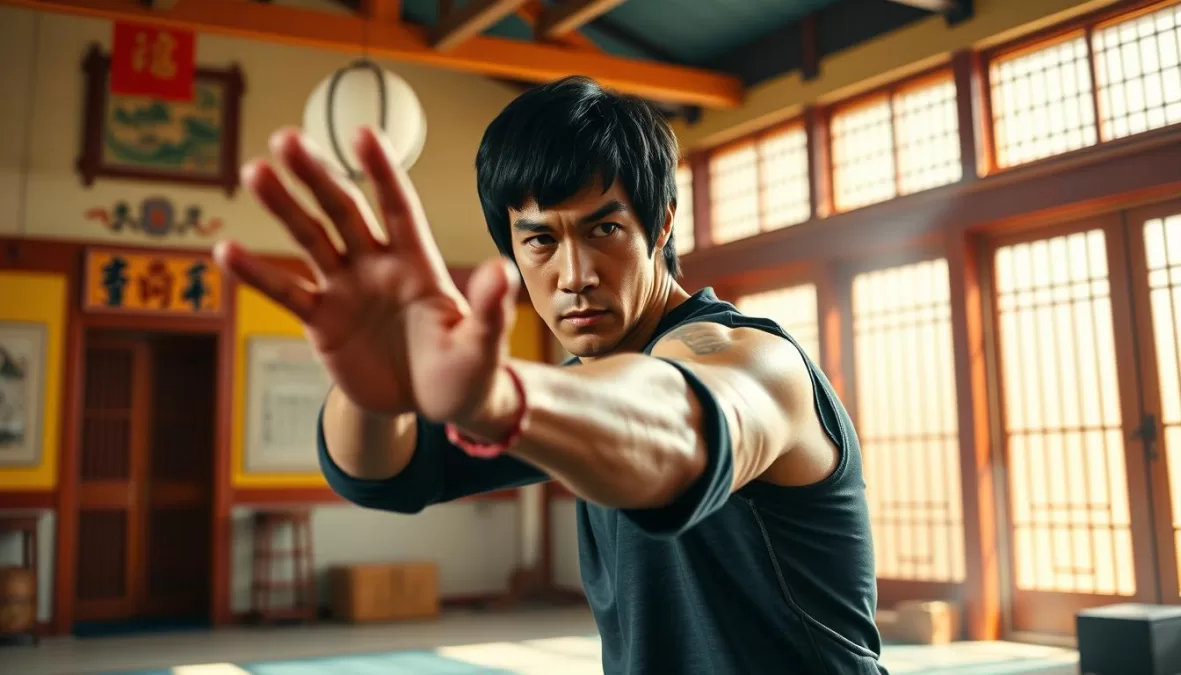
The Raid: Redefining Fight Choreography
Gareth Evans’ “The Raid: Redemption” (2011) revolutionized the action genre with its raw, visceral approach to fight choreography, showcasing the Indonesian martial art pencak silat. The film’s performers demonstrated a speed and level of physical dexterity that seemed impossible, raising the bar for action filmmaking worldwide. Evans’ work has inspired a new generation of action choreographers, incorporating more realistic and intense fight sequences into their films.

Crouching Tiger, Hidden Dragon: Wuxia Goes Global
Ang Lee’s “Crouching Tiger, Hidden Dragon” (2000) brought the poetic traditions of wuxia to Western audiences, blending breathtaking martial arts sequences with emotional storytelling. The film featured Michelle Yeoh in one of her most iconic roles, further cementing her status as a martial arts cinema legend. This film not only entertained but also served as a cultural bridge, introducing Western viewers to Eastern philosophical concepts and fighting traditions.
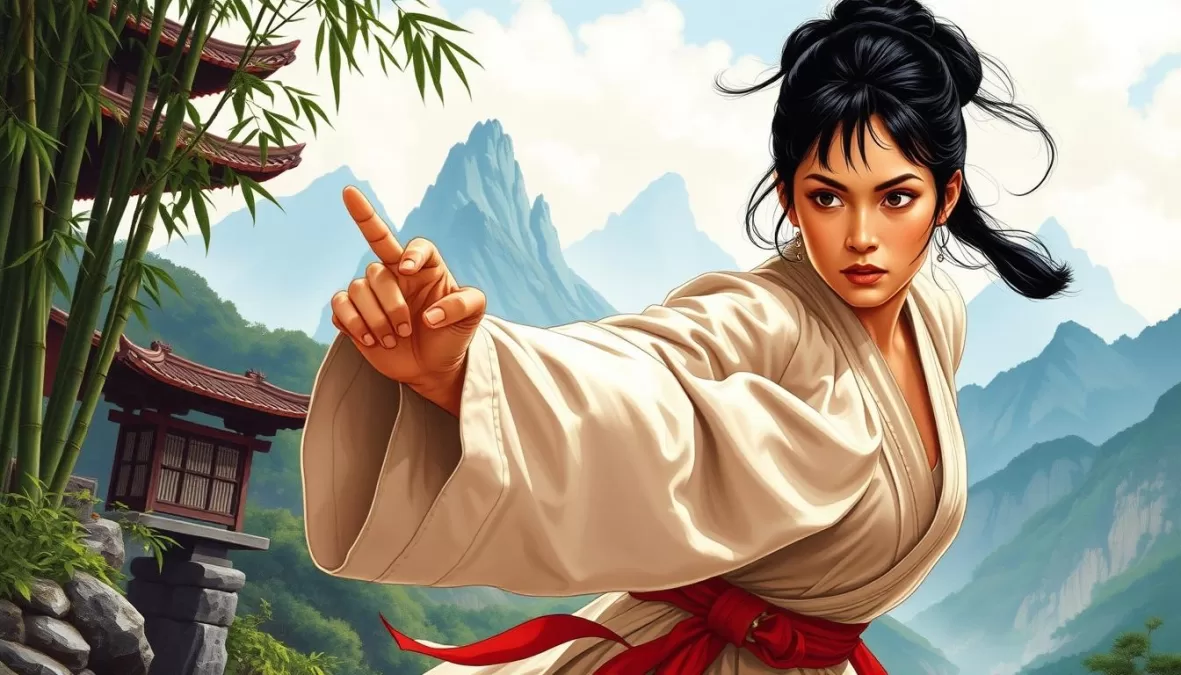
These films have not only influenced Western action cinema but have also created new hybrid forms of action, blending Eastern and Western styles. The impact of martial arts on the global film industry is undeniable, with many modern action films incorporating elements of Eastern martial arts traditions.
The legacy of these martial arts masterpieces continues to be felt in modern action cinema, with directors and choreographers drawing inspiration from the innovative fight sequences and cultural exchange that these films represent.
Sci-Fi Action: When Genres Collide
Sci-fi action films represent a thrilling amalgamation of futuristic concepts and adrenaline-fueled sequences, captivating audiences worldwide. This section explores how the fusion of science fiction and action filmmaking has led to the creation of some of Hollywood’s most innovative and thought-provoking blockbusters.
The Terminator Franchise: Man vs. Machine
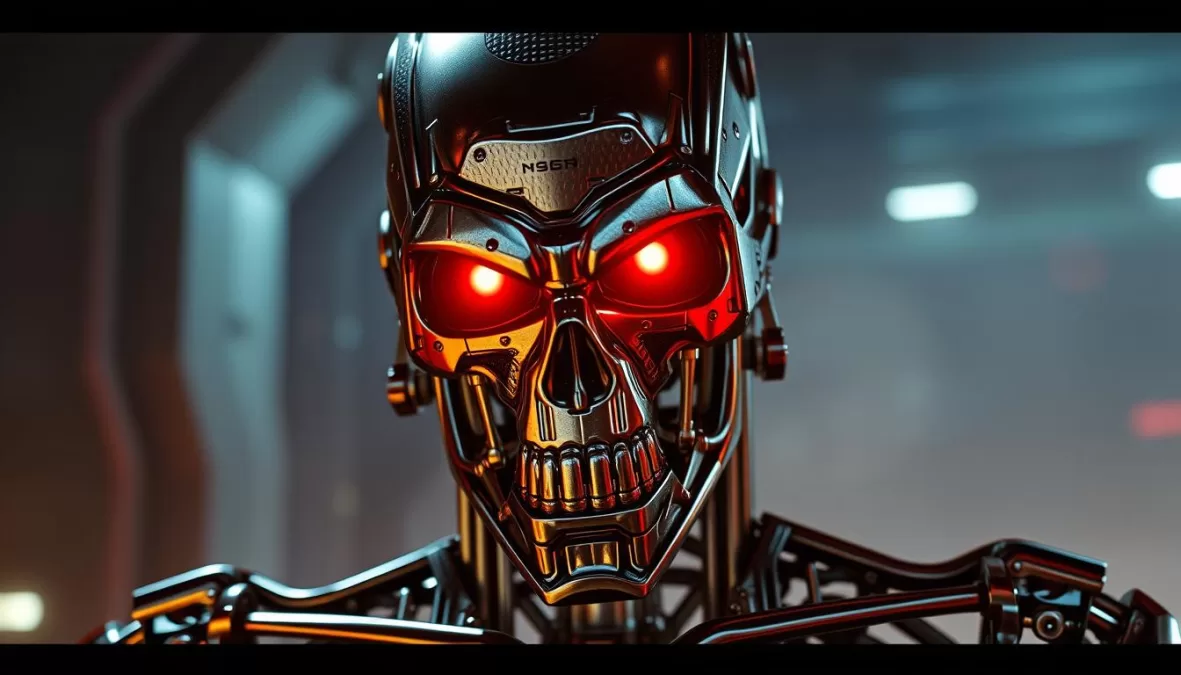
The Terminator franchise, initiated by James Cameron, stands as a landmark in sci-fi action. It explores the conflict between humanity and artificial intelligence, providing a compelling backdrop for groundbreaking action sequences and visual effects. The central plot revolves around a cyborg assassin sent back in time, raising the stakes for human survival.
The franchise has evolved over the years, incorporating new technologies and narrative twists while maintaining its core theme of man vs. machine. The relentless pursuit of the Terminator, coupled with its iconic appearance, has made it a cultural phenomenon.
The Matrix Trilogy: Philosophy Meets Kung Fu
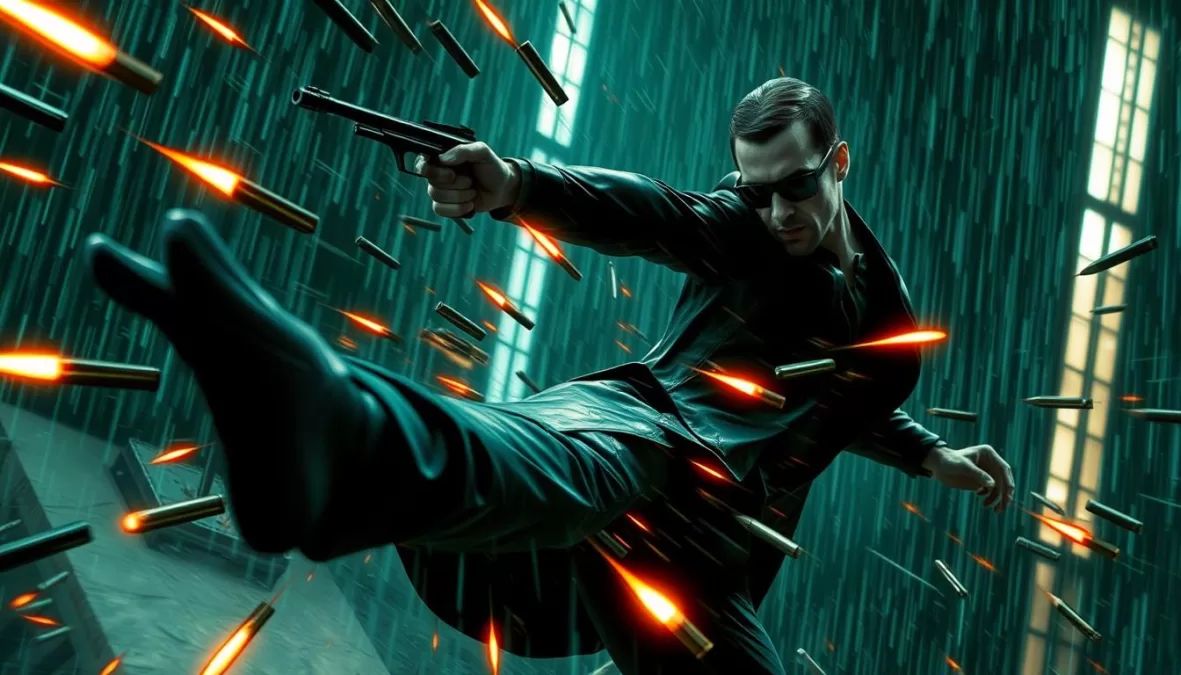
The Matrix trilogy, created by the Wachowskis, is renowned for its philosophical underpinnings and innovative action sequences. By blending complex ideas about reality, free will, and human potential with cutting-edge visual effects and martial arts choreography, the trilogy has set a new standard for sci-fi action.
The “bullet time” effect, along with intricate fight scenes, has become iconic in the world of cinema. The trilogy’s exploration of a simulated reality created by machines to subdue humanity adds depth to its action-packed narrative.
Edge of Tomorrow: Time Loops and Alien Invasions
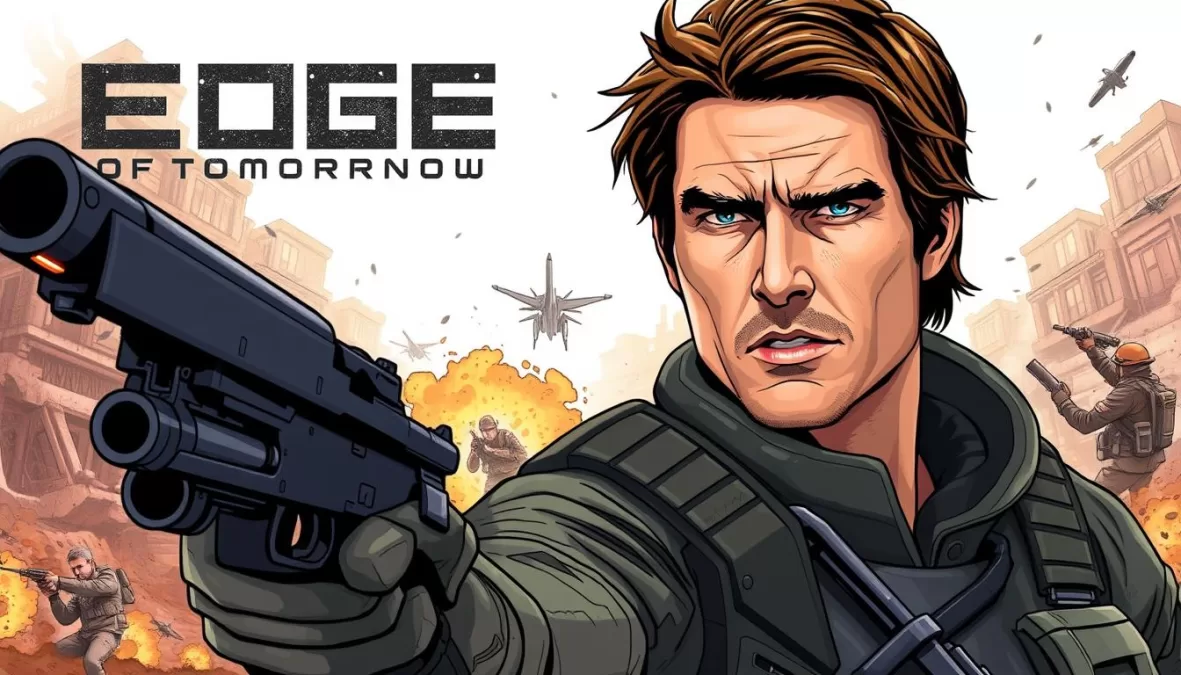
Edge of Tomorrow, directed by Doug Liman and starring Tom Cruise, exemplifies modern sci-fi action excellence. The film’s time-loop narrative structure, where the protagonist relives the same day repeatedly, creates unique action possibilities and enhances the story’s tension.
Cruise’s commitment to physical performance is evident in the film’s demanding action sequences. The movie’s blend of humor, intense action, and an alien invasion narrative makes it a standout in the genre.
Spy Action Thrillers: From Bond to Bourne
Spy action thrillers have captivated audiences for decades, with iconic franchises like James Bond, the Bourne series, and Mission: Impossible redefining the genre through their unique approaches to action and espionage.
The Enduring Legacy of James Bond
James Bond has been a cultural icon for nearly 60 years, with the franchise continually adapting to changing audience tastes while maintaining the core elements that make 007 an enduring action hero.
The early Bond films were characterized by their sophisticated espionage, gadget-driven plots, and charismatic leads. As the series progressed, it incorporated more action-oriented sequences, reflecting the changing preferences of audiences.
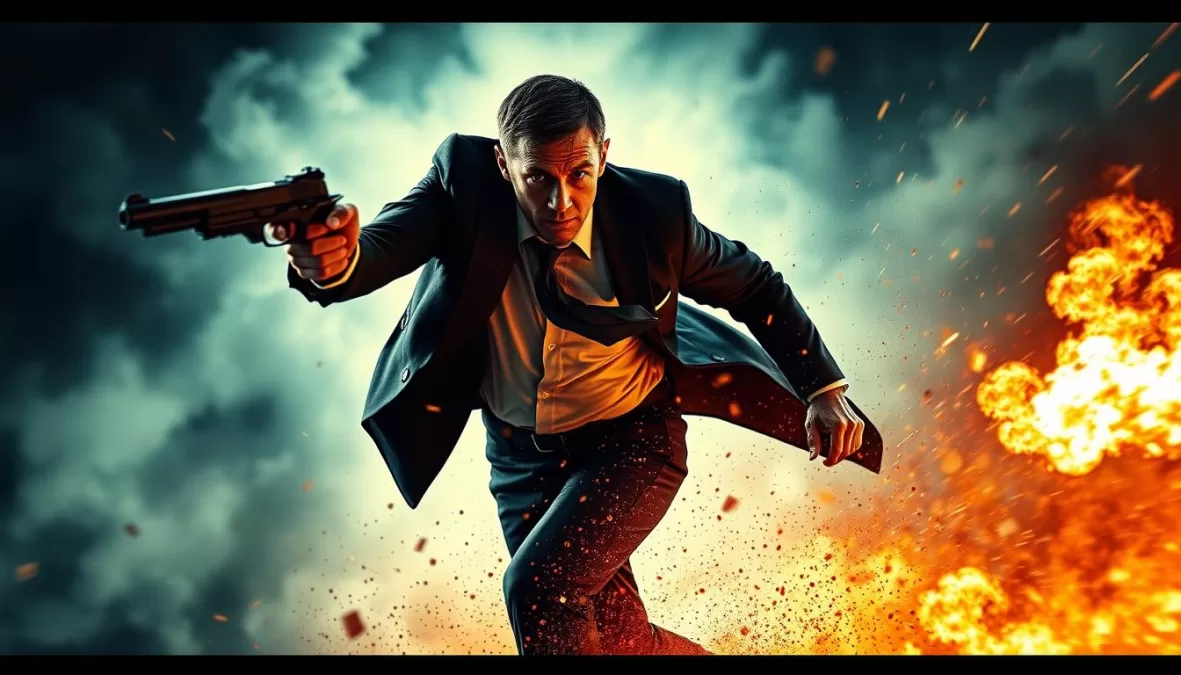
Reinventing Spy Action with the Bourne Series
The Bourne series revolutionized the spy action genre with its gritty realism, hand-to-hand combat, and intense stunts, setting a new template for the genre.
Paul Greengrass’s documentary-style approach to filming action and Matt Damon’s portrayal of a more vulnerable spy created a fresh perspective on the traditional spy narrative.

Mission: Impossible – The Tom Cruise Legacy
The Mission: Impossible series has become synonymous with spectacular stunts and practical effects, thanks in large part to Tom Cruise’s dedication to performing increasingly complex action sequences.
This commitment to practical stunts has distinguished the franchise in an era dominated by CGI-heavy blockbusters, with films like Mission: Impossible – Fallout showcasing breathtaking action.
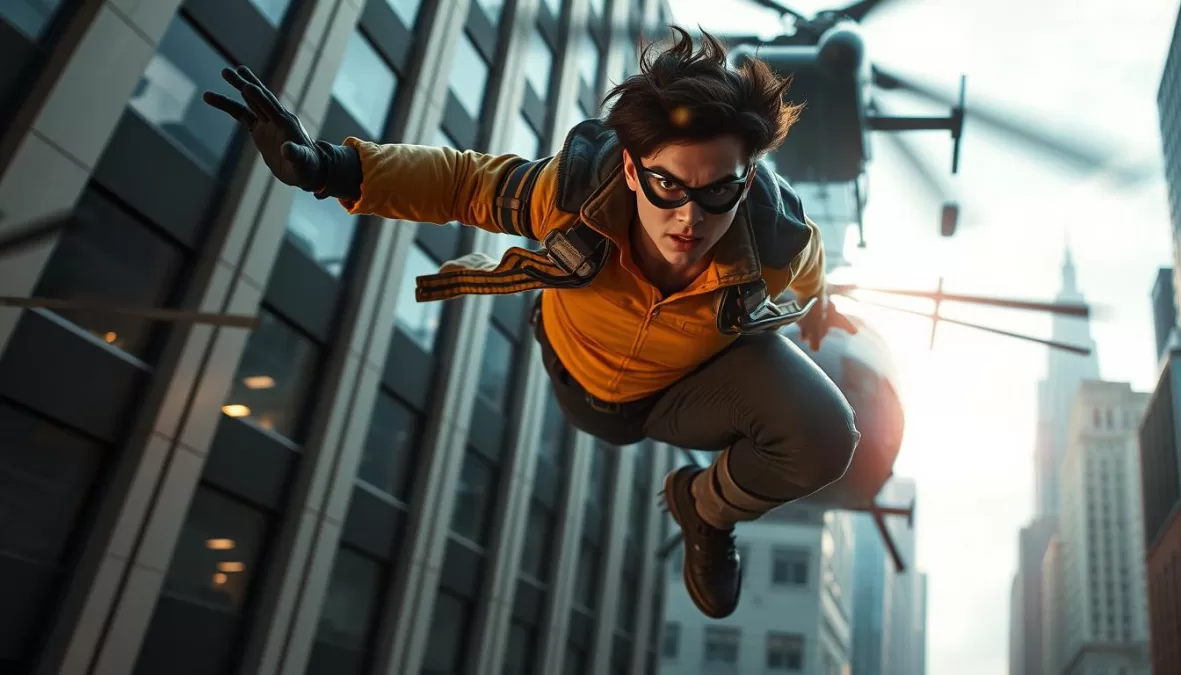
Spy action thrillers reflect their cultural moments, from Cold War tensions in early Bond films to post-9/11 paranoia in the Bourne series, and the emphasis on team dynamics in later Mission: Impossible entries.
The evolution of these franchises demonstrates the genre’s ability to adapt and thrive, ensuring that spy action thrillers remain a staple of modern cinema.
Vehicular Action: Cars, Planes, and Everything in Between
Action films have long utilized vehicles as more than just modes of transportation, transforming them into characters that drive the story forward and electrify the screen. From high-octane car chases to heart-stopping aerial stunts, vehicular action has become a cornerstone of the genre, captivating audiences with its unique blend of excitement and spectacle.
Fast & Furious: From Street Racing to Global Spectacle
The Fast & Furious franchise has undergone a significant transformation since its humble beginnings as a street racing film. Over the years, it has evolved into a global action phenomenon, featuring high-stakes heists, daring stunts, and physics-defying vehicular action that has captivated audiences worldwide.
The franchise’s success can be attributed to its ability to balance high-octane action sequences with compelling characters and narratives, making it a staple in modern action cinema.
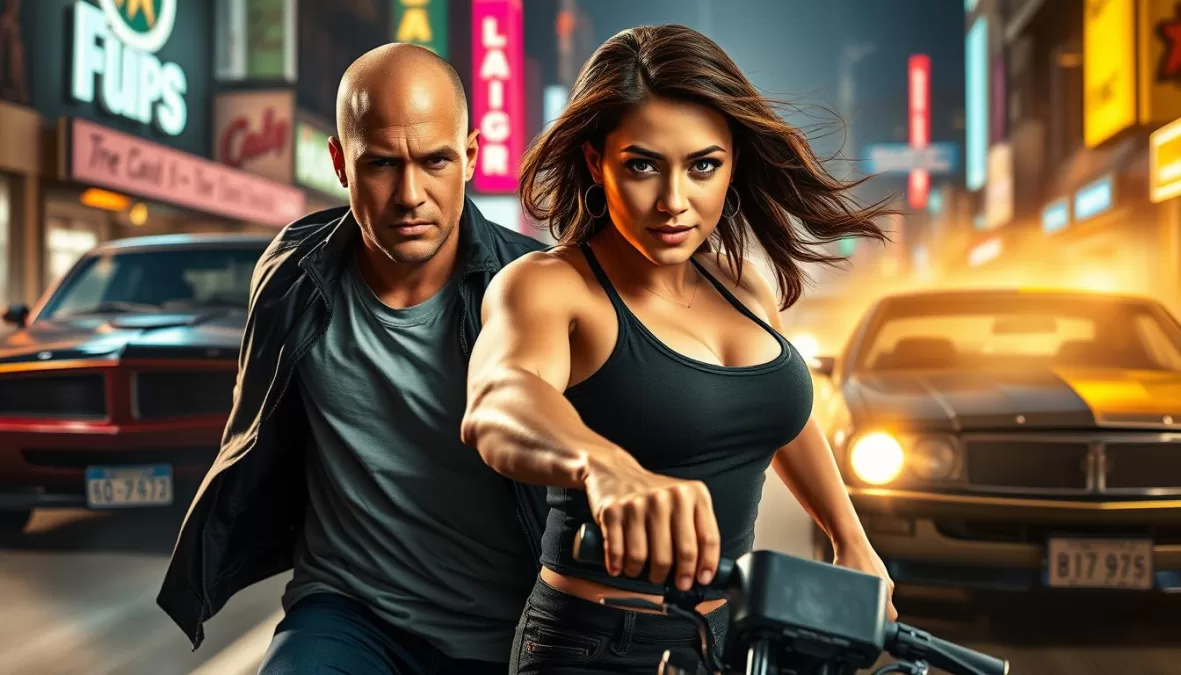
Mad Max: Fury Road – The Ultimate Car Chase Movie
Mad Max: Fury Road is widely regarded as one of the greatest action films of all time, with its masterful vehicle choreography and heart-pumping car chases. Director George Miller’s vision brought the post-apocalyptic world to life, with Tom Hardy taking over the role originated by Mel Gibson.
The film’s success lies in its ability to craft an immersive experience, with the vehicles becoming an integral part of the narrative and driving the action forward.
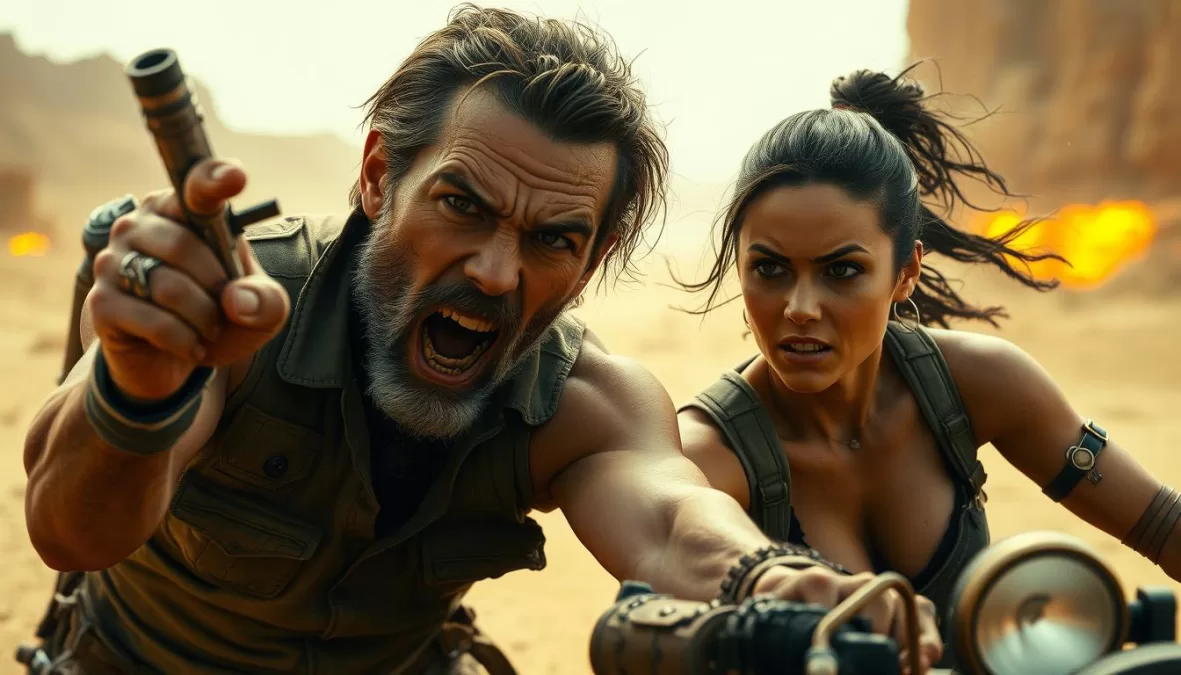
Top Gun: High-Flying Action in the Skies
Top Gun and its sequel, Top Gun: Maverick, have revolutionized aerial action sequences, pushing the boundaries of what is possible on screen. The films’ use of innovative camera techniques and heart-stopping stunts has redefined the genre, putting audiences directly into the cockpit during high-speed jet maneuvers.
The success of Top Gun can be attributed to its ability to balance action with compelling characters and narratives, making it a timeless classic in modern action cinema.

Vehicular action films often reflect broader cultural attitudes toward technology, speed, and freedom, making them more than just showcases for impressive stunt work. They tap into our fascination with machines and our desire for adrenaline-fueled excitement, creating a unique cinematic experience that continues to captivate audiences worldwide.
Superhero Action: The Dominant Force in Modern Cinema
The 21st century has witnessed a seismic shift in action cinema, with superhero films emerging as the dominant force. This transformation has not only changed the types of movies being produced but has also significantly impacted the film industry’s overall landscape.
Superhero films have become a cultural phenomenon, captivating global audiences with their blend of action, drama, and spectacle. The success of these films can be attributed to their ability to evolve with the times, incorporating new technologies and storytelling techniques that keep viewers engaged.
Grounded Superhero Action

Christopher Nolan’s Dark Knight trilogy is a landmark in superhero cinema, known for its grounded and realistic portrayal of superhero action. The trilogy’s success can be attributed to its complex characters, intricate plotting, and the use of practical effects, which added to the films’ realism.
The trilogy’s impact on the genre cannot be overstated, as it raised the bar for superhero films by introducing a level of sophistication and depth previously unseen. This approach influenced a generation of filmmakers and paved the way for more complex superhero stories.
Building an Action Empire
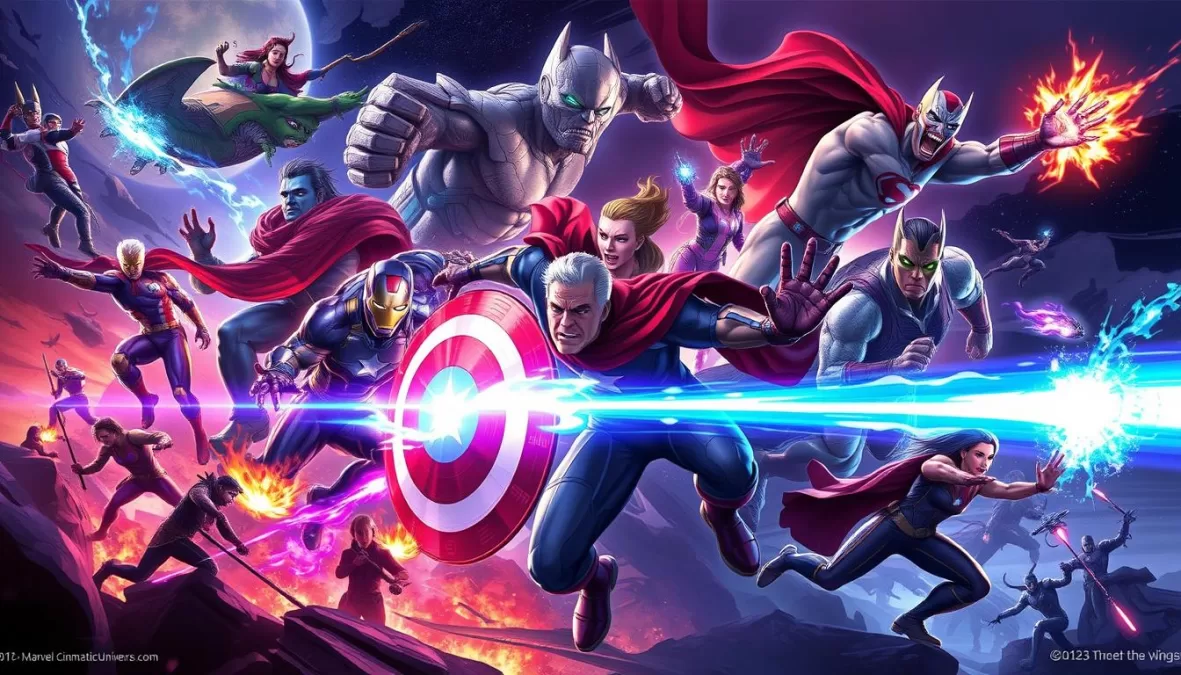
The Marvel Cinematic Universe (MCU) represents a new era in franchise filmmaking, with its interconnected storytelling and consistent action style. The MCU has successfully created a vast, cohesive universe that spans multiple films and characters, captivating audiences worldwide.
The MCU’s success can be attributed to its ability to balance action, humor, and drama, creating a unique viewing experience that appeals to a broad audience. The franchise’s impact on the film industry is significant, demonstrating the potential for long-term, interconnected storytelling.
Female-Led Superhero Action
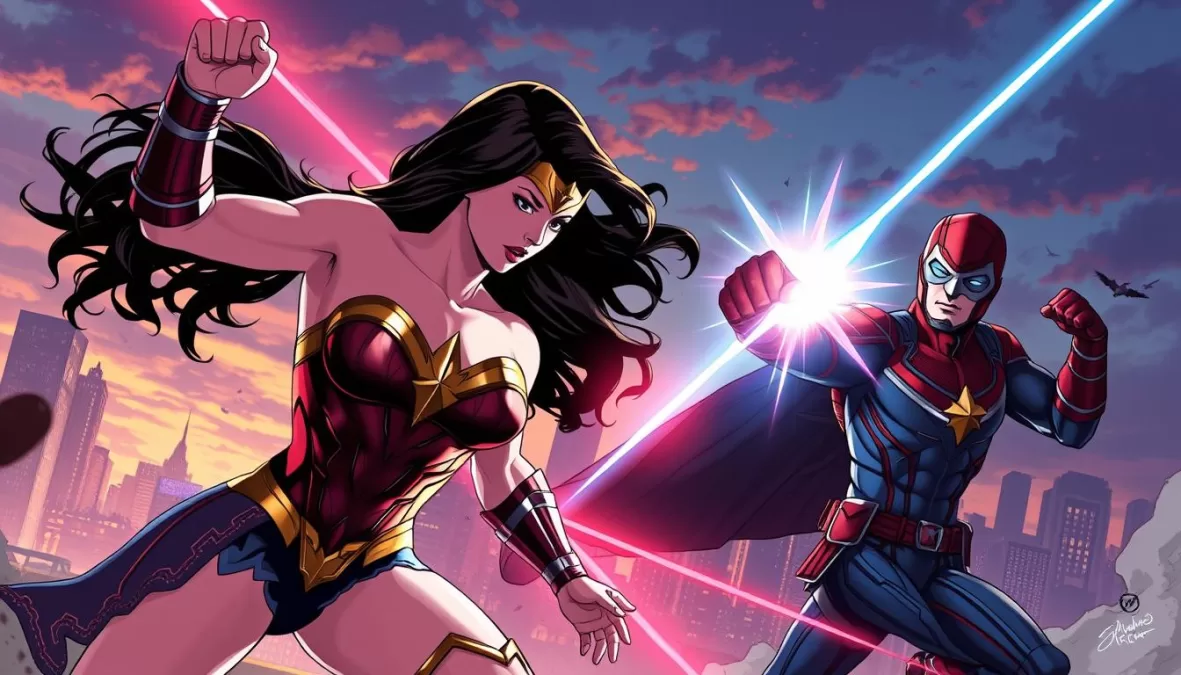
Female-led superhero films like “Wonder Woman” and “Captain Marvel” have expanded the genre’s appeal, challenging traditional gender roles in action cinema. These films have demonstrated that superhero movies can be successful without relying on male protagonists, paving the way for more diverse storytelling.
The success of these films highlights the evolving tastes of audiences and the industry’s ability to adapt to changing demands. By offering a fresh perspective on the superhero genre, these movies have attracted new fans and reinvigorated the genre as a whole.
The Future of Superhero Action Films
As the superhero genre continues to evolve, it’s likely that we’ll see new trends and innovations emerge. The future of superhero action films may involve further diversification of characters and stories, as well as advancements in technology that enhance the viewing experience.
The ongoing success of superhero films will depend on the industry’s ability to balance action, drama, and spectacle while continuing to innovate and push the boundaries of what is possible. As audiences’ tastes continue to evolve, the genre will need to adapt to remain relevant.
Underrated Action Gems: Hidden Classics Worth Discovering
The world of action cinema is filled with overlooked masterpieces just waiting to be unearthed. While blockbuster franchises often dominate the headlines, there are numerous action films that, despite their initial lack of recognition, have cultivated dedicated cult followings over time.
Hard Boiled: John Woo’s Hong Kong Masterpiece
John Woo’s Hard Boiled is a landmark of Hong Kong action cinema, renowned for its balletic gunplay and an iconic three-minute tracking shot during a hospital shootout. Starring Chow Yun-fat, this film is a must-watch for its intense action sequences and charismatic performance.
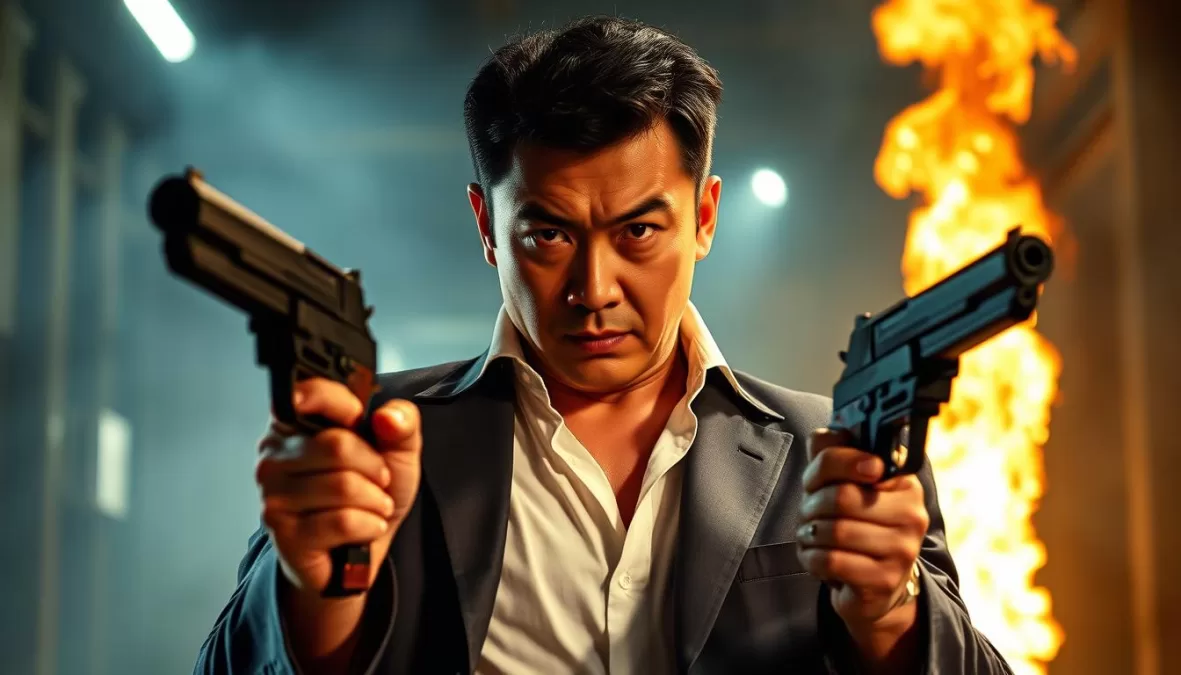
The Man From Nowhere: Korean Action Excellence
The Man From Nowhere exemplifies the strengths of Korean action cinema with its emotional storytelling and brutal fight choreography. This film has garnered acclaim for its unique blend of action and drama, making it a standout in the genre.
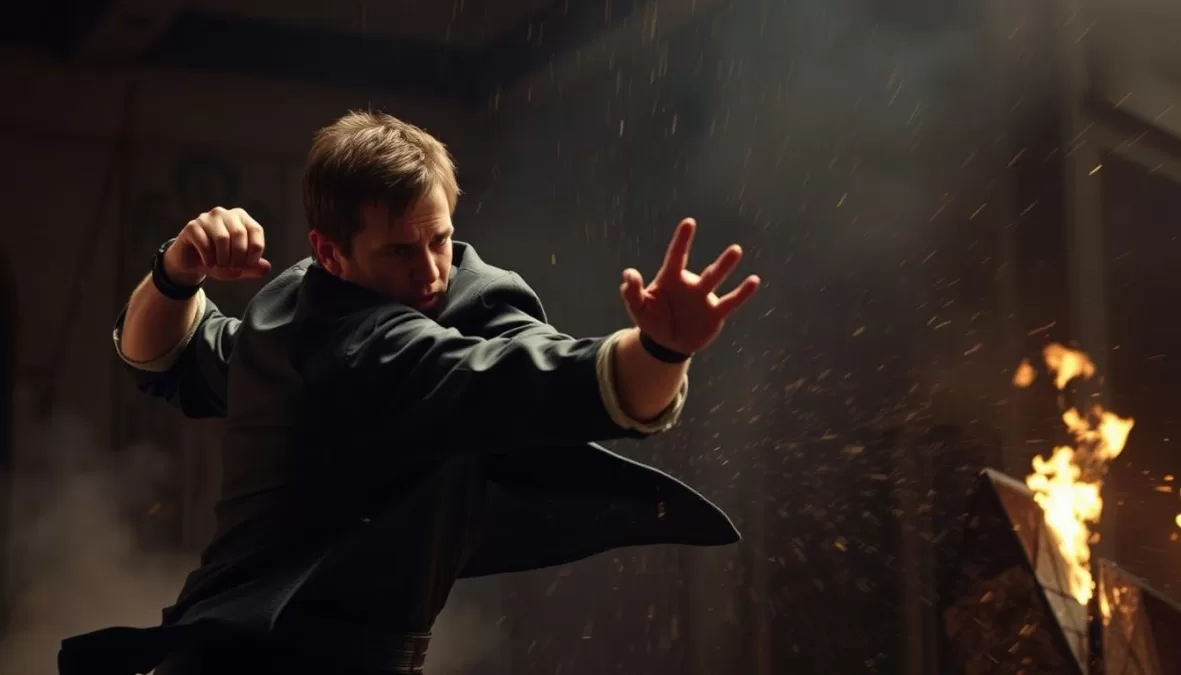
Dredd: Comic Book Action Done Right
The 2012 film Dredd is a prime example of a successful comic book adaptation. With its lean narrative, striking visuals, and commitment to the source material’s tone, it has become a cult classic among fans of the genre.

The Night Comes For Us: Brutal Indonesian Action
Gareth Evans’ The Night Comes For Us is a brutal and unflinching action film that showcases the director’s mastery of fight choreography. This Indonesian action film has received critical acclaim for its innovative and intense action sequences.
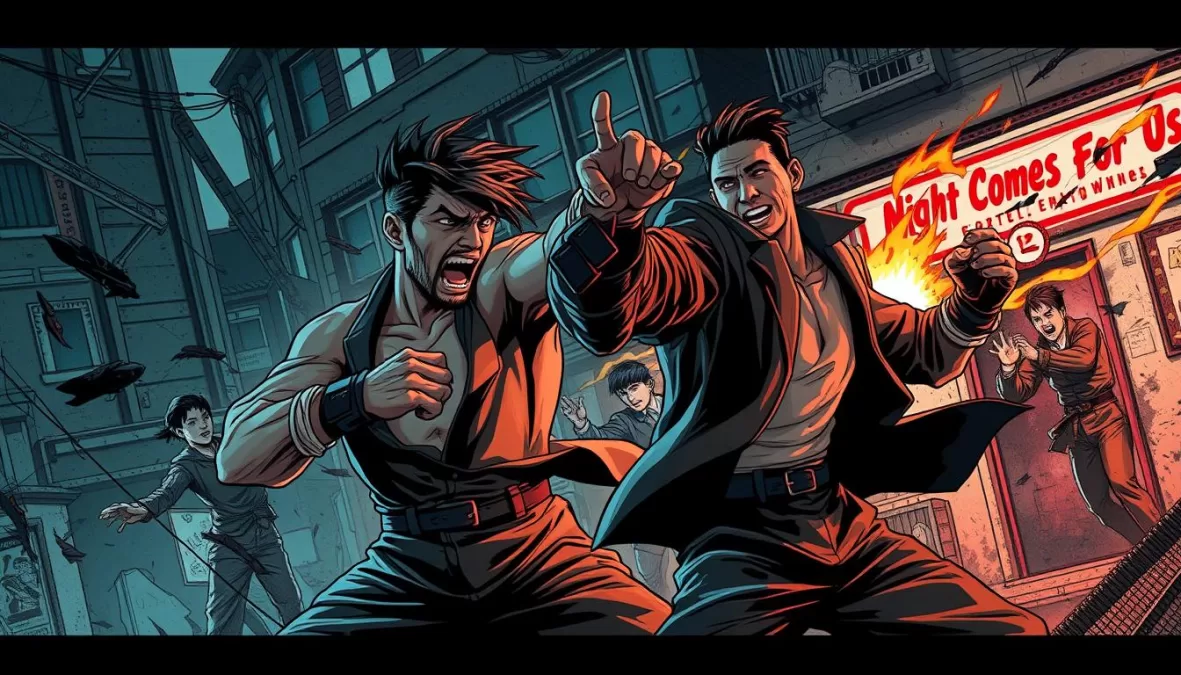
These films, among others, represent the best of underrated action cinema, offering something unique and thrilling for fans of the genre. Whether it’s the balletic gunplay of Hard Boiled or the brutal fight choreography of The Night Comes For Us, there’s no shortage of hidden gems to discover.
The Art of the Action Sequence: Analyzing Iconic Moments
The art of crafting memorable action sequences is a delicate balance of technical prowess, creative vision, and narrative integration. These sequences are more than just thrilling moments; they are crucial elements that can make or break a film’s success.
Action sequences have evolved significantly over the years, influenced by various cinematic traditions and technological advancements. From the early days of cinema to the modern blockbusters, the way action is presented on screen has undergone a dramatic transformation.
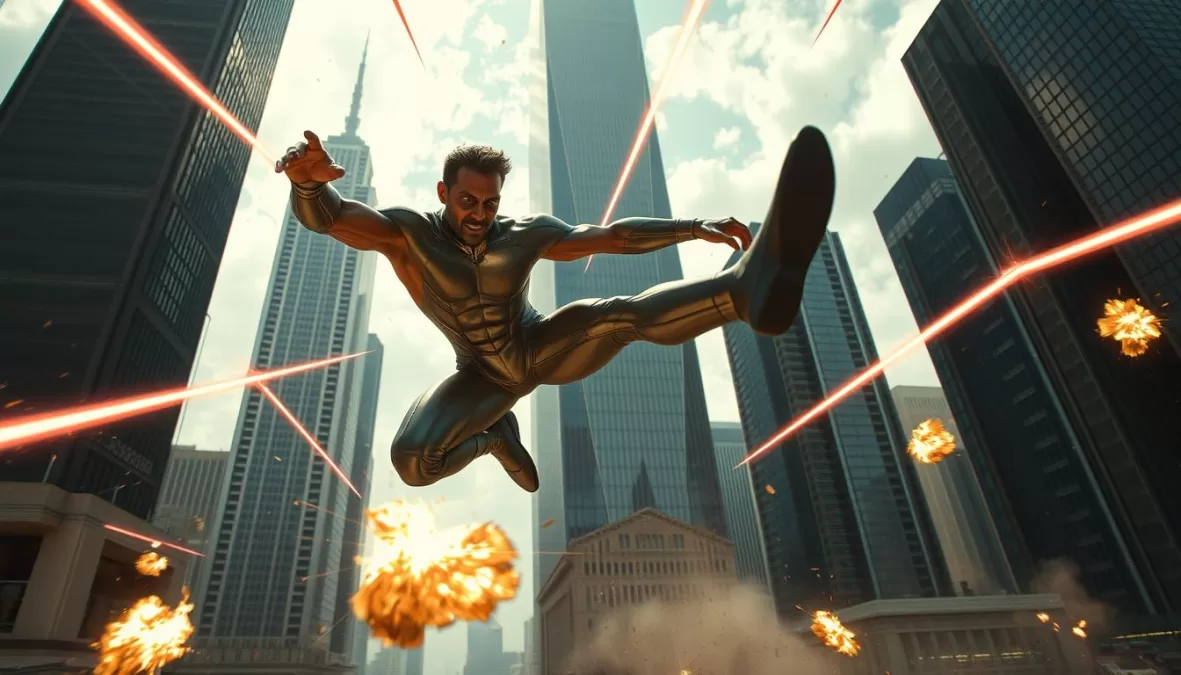
The Hallway Fight: From Oldboy to Daredevil
The hallway fight is a staple of action cinema, known for its intense and claustrophobic nature. This type of sequence originated in Asian cinema, with films like Park Chan-wook’s “Oldboy” setting a high standard for fight choreography in confined spaces.
The influence of “Oldboy” can be seen in later Western productions such as “Daredevil,” where the hallway fight scene became a highlight of the film. The challenge of choreographing fights in such a confined environment requires creativity and precision, making it a true test of a director’s skill.
“A well-choreographed fight scene is not just about the physicality; it’s about telling a story through movement and emotion.” – Park Chan-wook
Car Chases: From Bullitt to Baby Driver
Car chases are another iconic element of action cinema, capable of delivering high-octane thrills and suspense. The genre has evolved from the gritty realism of “Bullitt” to the music-synchronized precision of “Baby Driver.”
Directors approach vehicular action in various ways, using it to create distinct moods and thrills. For instance, “Bullitt” is renowned for its realistic and intense car chase scenes, while “Baby Driver” innovatively uses music to choreograph its action, creating a unique viewing experience.
| Film | Year | Notable Action Sequence |
|---|---|---|
| Bullitt | 1968 | Realistic car chase |
| Baby Driver | 2017 | Music-synchronized car chase |
Shootouts: From Heat’s Bank Robbery to John Wick’s Club Scene
Shootout sequences have also undergone significant evolution, from the stylized gunplay of John Woo’s Hong Kong films to the intense realism of Michael Mann’s “Heat” and the “gun fu” of the “John Wick” series.
These sequences are not just about the technical aspect of filming gunplay; they are also about creating a narrative impact. The “John Wick” series, for example, is known for its innovative “gun fu” style, which combines gunplay with martial arts, creating a visually stunning and action-packed experience.
In conclusion, iconic action sequences are a crucial part of what makes action movies memorable. By analyzing these sequences, we can gain a deeper understanding of the art and craft that goes into creating them, as well as their impact on the film’s overall narrative and success.
The Role of Music in Action Cinema
The pulse-pounding action sequences in modern cinema owe as much to their soundtracks as they do to their visual effects. Music plays a crucial role in enhancing the emotional impact of action scenes, turning what could be mere chaos into a thrilling experience that captivates action movie enthusiasts.
Hans Zimmer’s Impact on Modern Action Soundtracks
Hans Zimmer has been a game-changer in the world of action film scoring. His work on “The Dark Knight” trilogy, for instance, introduced a percussion-heavy approach that added a new layer of tension to the Batman franchise. The distinctive “BRAAAM” sound he pioneered for “Inception” has been widely imitated, becoming a staple of modern action movie soundtracks.
- Revolutionized the use of percussion in action scores
- Introduced the “BRAAAM” sound effect in “Inception”
- Collaborated with directors to create unique soundscapes
Iconic Action Movie Themes and Their Effect
Iconic themes have the power to become synonymous with the movies they represent. John Williams’ adventurous “Raiders of the Lost Ark” march and Bill Conti’s triumphant “Rocky” theme are prime examples. These memorable melodies become inseparable from our experience of the film, often evoking the excitement and tension of key scenes.
Some of the most iconic themes include:
- “Raiders of the Lost Ark” march by John Williams
- “Rocky” theme by Bill Conti
- “James Bond” theme by Monty Norman
How Music Enhances Action Sequences
Music and sound design work together to create an immersive experience during action sequences. By carefully crafting the audio landscape, composers and sound designers can guide audiences’ emotions, emphasizing key moments without overwhelming the visual elements. This synergy is crucial in making set pieces memorable and impactful.
The best action film scores don’t just accompany the on-screen action; they actively participate in the storytelling, creating a complete audiovisual experience that heightens the impact of the set pieces. By doing so, they elevate the overall movie experience, making it more engaging and memorable for viewers.
The Future of Action Movies: Trends and Predictions
The action movie landscape is on the cusp of a revolution, driven by technological advancements and global influences. As we look to the future, it’s clear that the genre is evolving in exciting ways.
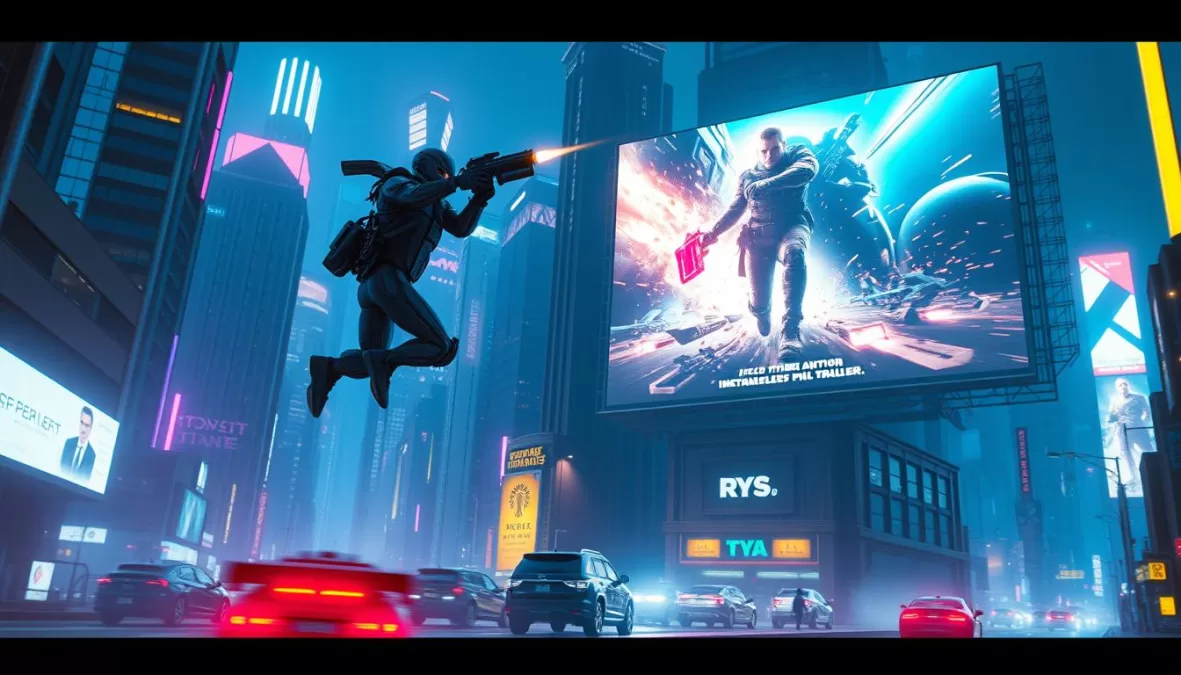
Virtual Production and New Technologies
One of the most significant trends shaping the future of action cinema is the adoption of virtual production technologies. Inspired by productions like “The Mandalorian,” filmmakers are now able to create complex environments in real-time, reducing reliance on post-production effects. This shift not only enhances visual quality but also streamlines the production process, allowing for more ambitious action sequences.
Virtual production enables directors to visualize and capture scenes in a more immersive and interactive way, potentially revolutionizing how action scenes are choreographed and filmed. As this technology continues to evolve, we can expect to see even more sophisticated and engaging action films.
International Action Cinema’s Growing Influence
The influence of international action cinema is another key factor shaping the future of the genre. Films from countries like South Korea, Indonesia, and Hong Kong are bringing fresh perspectives and innovative action choreography to the global stage. For instance, the Hong Kong action cinema legacy continues to inspire filmmakers worldwide with its unique blend of martial arts and high-energy action.
- Films like “The Raid” are redefining fight choreography with their intense, realistic sequences.
- International collaborations are becoming more common, allowing for the exchange of ideas and techniques across borders.
This global exchange is enriching the action genre, introducing new styles and approaches that are influencing Hollywood productions.
Balancing Practical Effects with CGI
The debate between practical effects and CGI continues to be a significant consideration for action filmmakers. Stars like Tom Hardy and Tom Cruise are known for performing real stunts, advocating for the authenticity that practical effects bring to action scenes. However, CGI also plays a crucial role in enhancing and expanding the possibilities of action filmmaking, offering safety and creative flexibility.
Films starring Nicolas Cage often showcase a blend of both, demonstrating how practical and digital effects can be combined to create compelling action sequences. The key to successful action filmmaking lies in striking the right balance between these elements, leveraging the strengths of each to create memorable and impactful scenes.
As distribution models continue to evolve, particularly with the rise of streaming, the types of action films being produced are also likely to change. This shift may create opportunities for both large-scale spectacles and more character-driven action films, catering to diverse audience preferences.
In conclusion, the future of action movies is bright, with technological innovations, international influences, and a nuanced approach to effects combining to push the genre forward.
Conclusion: Why We Love Action Movies
The enduring appeal of action movies lies in their ability to transport us to a world of high-octane thrills and heart-pumping excitement. Action films have a unique way of captivating audiences, providing an escape from reality while delivering memorable characters and storylines.
One of the key factors in the success of action cinema is the visceral thrill of well-executed action sequences. Films like Mad Max: Fury Road, starring Tom Hardy, have redefined the genre with their practical stunts and adrenaline-fueled chases. Similarly, the martial arts prowess of Michelle Yeoh in films like Crouching Tiger, Hidden Dragon has showcased the artistry and physicality of action cinema.
Action narratives often tap into timeless storytelling patterns, resonating with audiences across cultures. Directors like Ridley Scott and George Miller have mastered the art of crafting compelling stories that feature iconic characters, such as those played by Sylvester Stallone, Harrison Ford, and Russell Crowe. These stories not only entertain but also tap into our collective imagination, making the action genre a staple of modern cinema.
Moreover, action movies frequently reflect and process real-world anxieties, transforming them into cathartic entertainment. From the Cold War tensions to post-9/11 fears and civil war concerns, action films have addressed various societal issues, providing a safe outlet for viewers to experience and process these anxieties.
The best action films combine spectacle with genuine emotion and artistry, creating experiences that stay with us long after the credits roll. Stars like Dwayne Johnson, Mel Gibson, and Nicolas Cage bring their unique charisma to their roles, enhancing the overall impact of the film. As the action genre continues to evolve, it’s clear that its appeal lies in its ability to balance thrilling action sequences with compelling narratives and memorable characters.
In conclusion, the love for action movies stems from their ability to provide a thrilling escape, tap into our collective imagination, and process real-world anxieties. As the genre continues to grow and evolve, it will be exciting to see how filmmakers push the boundaries of action cinema, creating new and innovative experiences for audiences worldwide.

